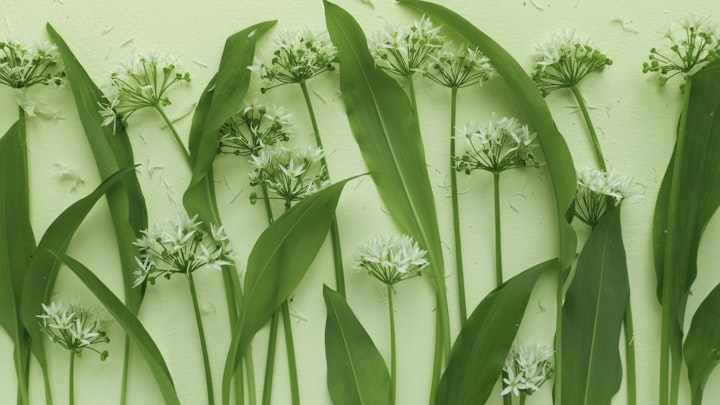June Is The Camas Moon
Be aware: Common Camas bulbs closely resemble those of their cousin, the Death Camas, which, as the name suggests, is highly toxic.

The blue Camas, commonly known as sweet Camas, or edible Camas, is a hardy perennial that grows from large bulbs.

Description
Common Camus (Camassia leichtlinii and C. quamash,) is part of a genus of plants in the Liliaceae or lily plant family, which includes more than 475 species in North America and more than 4200 species worldwide. Also known as Indian hyacinth, wild hyacinth, camash, swamp lily, blue Camas, swamp sego, small Camas, camash, or quamash, Common Camus is a hardy springtime wildflower with slender grass-like leaves and feathery, clear bluish-purple flowers.

The plant reaches a mature height of 12-to-14 inches. Common Camas bulbs vary from a half-inch to 3 inches in diameter. The leaves range from 4 to 24 inches in length. The flower scape grows from 8 to 28 inches tall, typically taller than the leaves. The deep violet-blue flowers are stunning, opening and closing in dense succession along the stately flower stalk. The range of Common Camus extends from northern British Columbia to southern California, then east to western Montana, and across Wyoming. The sweet, edible bulbs of the nutritious, indigenous root vegetable are a Native American food delicacy. Sustainable gardeners and wild foragers continue to highly value Camas as a nourishing consumable.
Edible Uses
The ionic Northwest wildflower served as an essential food staple for the Blackfoot, Salish, and several other Native American tribes where Common Camus thrived across Western North America. Common Camus is gathered in late spring when the bottom of the flower stake begins to fade. Although harvest time varied depending on the weather and altitude, the Flathead tribe designated June as the Camus Moon.

The tribes nurtured Camus through careful cultivation that included weeding, hoeing, fertilizing, and periodic burning of the fields to produce Camas in sufficient quantities to sustain their trib and to create a surplus for regional trade. Tribal members harvested Common Camas bulbs in mass quantities in midsummer. Different groups had their own individual plots and there was a playful competition between families to determine who could successfully harvest the most bulbs each year. The bulbs were then pit-roasted for up to 72-hours to break down complex carbohydrates into sugar fructose. When slow roasted in this fashion, one-third of the Camus bulbs’ cooked weight becomes fructose. The roasted bulbs were then dried, ground into a meal or flour, and stored for winter consumption. The coarse ground meal was used to make dumplings in stews or fried like a pancake.
Camus bulbs have a complex carbohydrate structure somewhat similar to an onion. Prolonged slow-roasting of the bulbs breaks down indigestible insulins into simple, sweet-tasting fructans in the exact same way as caramelizing onions makes them softer and sweeter. When slow-roasted, Camus bulbs have a subtle sweetness often compared to a baked apple, pear, sweet potato, or fig: chewy, sweet, and delicious.
The longer you cook Camus bulbs, the more caramelized and sweeter they become. Properly prepared roasted Camus will have a deep, dark brown color and a pungent, sweet scent of molasses.
Medicinal Benefits Of Common Camus
High in protein, Common Camus provides 5.4 ounces of protein in each pound of roots. As a comparison, salmon provides 3.4 ounces of protein per pound.
Several western tribes, including the Nez Perce, also used Camus as cough medicine. The bulbs were boiled, and the juice strained, then mixed with honey to calm coughing, wheezing, and difficulty in breathing.
Wild Harvesting

Common Camus is found growing in swales, depressions, coastal meadows, wet prairies, on moist hillsides, and along streamside wetlands. Typical Camas habitat is ephemeral, losing moisture by late spring. When the scouts of the Lewis and Clark Expedition first sighted meadows blanketed in Camus, they described what they saw as a deep blue mountain lake. The popularity of the sweet, edible bulb spread. By the late 1850s, Camus was harvested and shipped to the eastern seaboard and as far away as England. Not only did the public love the taste of the bulb, but the plant was also highly prized for its use in ornamental gardens.
Roasted Camus Bulbs
Directions:
Preheat the oven to 235 degrees Fahrenheit.
Break off the basal root crown, then remove and discard the thin papery sheaths, which encase the bulbs.
Clean and separate the bulb petals, remove the root end, which may be replanted to form new bulbs, and the top stalk end, as well as any mold or insect damage.
Rinse the petals and place them in a covered glass baking dish or a cast iron dutch oven. To avoid overcooking the bulbs on edge, line the baking dish or dutch oven well with soaked corn husks, rinsed thimbleberry leaves, or wads of parchment paper.
Add one-half cup of water or organic apple juice.
Sprinkle with one teaspoon of ground cardamom (optional).
Cover the roasting pot and bake bulbs for 24-to-36 hours or until fork tender and golden to dark brown.
Camus bulbs are prepared and consumed much like any other root vegetable. After roasting, the bulbs can be mashed like potatoes with a bit of butter and salt and pepper to taste. Camus bulbs are good and good for you: nutrient-dense, they offer more nutritional value and flavor than onions, our most commonly consumed bulb. Slow-cooked camas bulbs are so sweet; you can use them to sweeten other foods.
Some folks like to remove the bulbs from the oven when they are just slightly tender, yet firm. Cool, slice and fry like potatoes or chop Camus and serve cold, tossed in a garden salad.
Chunks of pre-roasted Camus bulbs and two tablespoons of minced fresh garlic sauteed in two tablespoons of butter make a terrific steak topper.
Add roasted Camus bulbs to enhance the flavor of wild game roasts, stir-fry, and stews. For more recipes to tantalize your taste buds, visit Native American Roots - Camas Cookbook.
Cultivation, Harvest, And Conservation
If you live in United States Plant Hardiness Zones 3 through 9, Camassia quamash bulbs are a “must-have” addition to the homestead landscape. Birds, bees, and butterflies flock to the flowers. The tenacious plant is cold, hardy, and long-lived. If you have a damp, yet sunny spot, plant a bed of Camas for an eye-catching splash of color in mid-to-late spring, followed by an abundant harvest of edible bulbs in the fall. Camus is an excellent choice for both moist clay and loam soils. Common Camus is used for borders, beds, ground cover, rock gardens, cut flowers, and prairie restoration.
One hundred fifty years ago, Common Camus blanketed the marshes and meadows of the Northwestern United States. However, settling of the American West promoted over-harvesting and loss of habitat. Conservation measures encourage limited harvesting of Camas bulbs in the wild. If you wish to add Common Camus to your homestead landscape as an ornamental, only collect a limited amount of seed from native populations. Camus seed, bulbs, or mature plants are also available from reputable local growers or native plant nurseries.
When adding Camus to the homestead garden, plant bulbs 4 to 6 inches apart or about nine bulbs to the square foot. Camus blooms in mid-spring and is typically harvested in June. Camas is adaptable to almost any type of soil but grows best in compost-enriched garden loam. To supplement soil, add well-aged herbivore manure (cow, horse, goat, sheep, horse, or llama) and work well into the soil prior to planting.
If you wish to naturalize a meadow or pasture, the best way is to plant Common Camas seed. Growing Camas from seed does require patience as it takes three years before the plant flowers. However, it is well worth the wait. A field in Camas is an eye-catching addition to any homestead landscape.
Cautions And Concerns

Although Camus bulbs can be consumed raw as survival food, roasting breaks down the fiber, making them tender and sweet. Raw Camus bulbs are not very tasty, they are rather stringy, the fibers stick to your teeth, and raw Camus bulb bites leave a soapy aftertaste in the mouth.
Be aware: Common Camas bulbs closely resemble those of their cousin, the Death Camas, which, as the name suggests, is highly toxic. In order to ensure that you are picking the right plant, the bulbs should be harvested when the plant is in bloom. Although eating one or two Death Camas bulbs will not kill you, they certainly can cause stomach distress. When harvesting, it is wise to do so with someone knowledgeable of the plant or always carry a field guide so that you can recognize the difference between the two plants.
References:
Montana Field Guide - Common Camas
http://fieldguide.mt.gov/speciesDetail.aspx?elcode=PMLIL0E040
United States Department of Agriculture - Common Camus
https://plants.usda.gov/plantguide/pdf/cs_caqub2.pdf
American Indian Health And Diet Project - Blue Camus
http://www.aihd.ku.edu/foods/blue_camas.html
United States Forest Service - Common Camus
https://www.fs.fed.us/wildflowers/plant-of-the-week/camassia_quamash.shtml
Native American Roots - Camas Roots
http://nativeamericannetroots.net/diary/828http://kwiaht.org/documents/Camascookbook.pdf
About the Creator
Marlene Affeld
“A passionate writer for more than 30 years, Marlene Affeld’s passion for the environment inspires her to write informative articles to assist others in living a green lifestyle.”






Comments
There are no comments for this story
Be the first to respond and start the conversation.